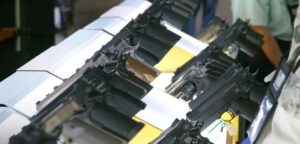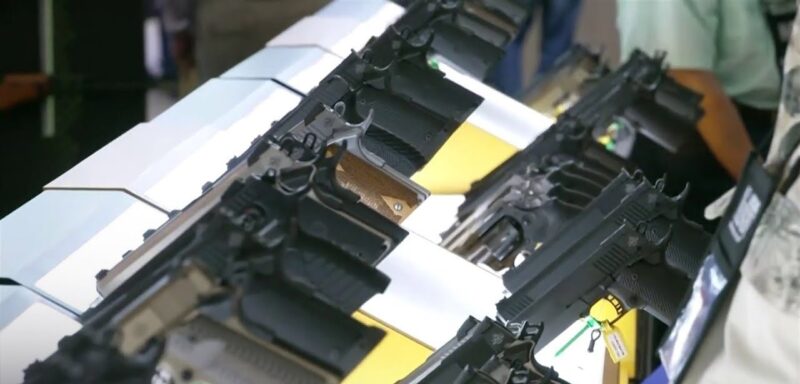Rising Concerns: How Law-Abiding Americans Are Reacting to Biden’s Border Invasion
Across the nation, firearm purchases are surging, with over 15.8 million guns finding their way into American homes in 2023 alone. This statistic, released by the National Shooting Sports Foundation (NSSF), paints a stark picture of a society increasingly preoccupied with personal safety. In the concrete jungle of New York City, this anxiety resonates acutely.
The Big Apple, once a symbol of cosmopolitan resilience, now grapples with an unsettling reality. The echo of distant gunshots has become a jarring soundtrack in some neighborhoods, while the specter of rising crime hangs heavy in the air. Democrats, who hold sway over the city’s political landscape, face sharp criticism for social justice reforms perceived as fueling this disquiet. Their approach, some argue, has left vulnerable communities exposed, breeding an environment where lawlessness festers.
Meanwhile, the southern border looms as a distant but no less potent source of unease. Images of overwhelmed authorities struggling to stem the tide of illegal immigration dominate nightly news cycles, fueling fears of a porous national security apparatus. New Yorkers, ever attuned to global threats, see parallels between this unfolding crisis and the chaotic scenes depicted in dystopian fiction. The sentiment – “it’s like Grand Theft Auto out there” – becomes a disconcerting refrain, whispered on subway platforms and muttered over café lattes.
 It is against this backdrop of unease and uncertainty that the surge in gun purchases takes on deeper meaning. For many New Yorkers, it’s not just about hunting rifles or target practice; it’s about reclaiming a sense of control in a world that feels increasingly unpredictable. The Second Amendment, once a dusty relic of frontier days, takes on a newfound immediacy, becoming a talisman against the perceived threats lurking on every corner.
It is against this backdrop of unease and uncertainty that the surge in gun purchases takes on deeper meaning. For many New Yorkers, it’s not just about hunting rifles or target practice; it’s about reclaiming a sense of control in a world that feels increasingly unpredictable. The Second Amendment, once a dusty relic of frontier days, takes on a newfound immediacy, becoming a talisman against the perceived threats lurking on every corner.
This trend, however, isn’t without its critics. While the desire for self-protection is undeniably human, some argue that it risks perpetuating a dangerous cycle of fear and escalation. The specter of an armed citizenry, vigilantly patrolling their own concrete canyons, paints a disturbing picture of a city teetering on the brink.
As New York navigates this complex landscape, nuanced discussions are desperately needed. The discourse surrounding gun ownership, crime, and immigration must move beyond polarized talking points and delve into the genuine anxieties that grip its residents. Only then can the city begin to address these challenges with pragmatic solutions, ensuring that the Big Apple remains a beacon of safety and civility, not a dystopian echo chamber.

